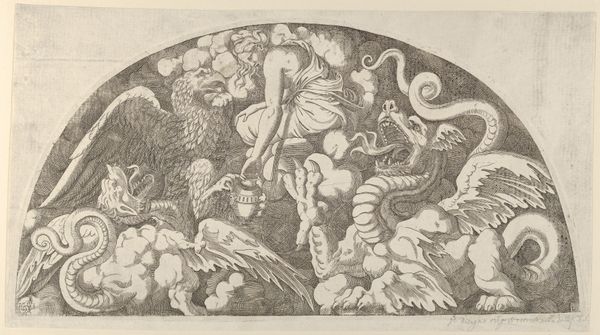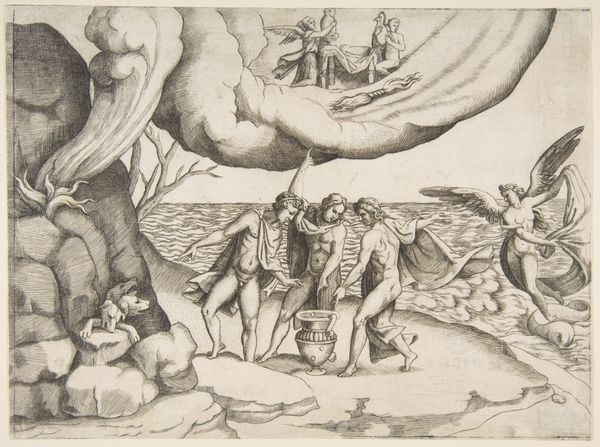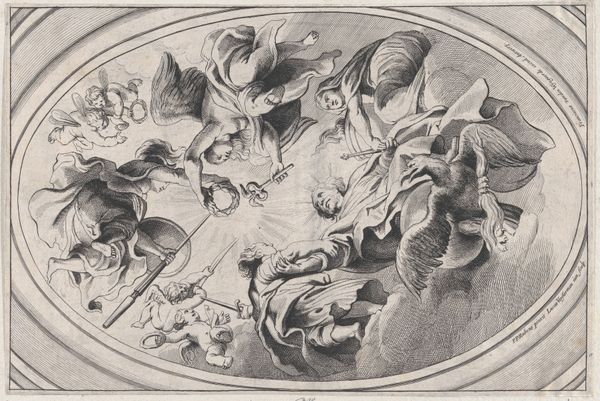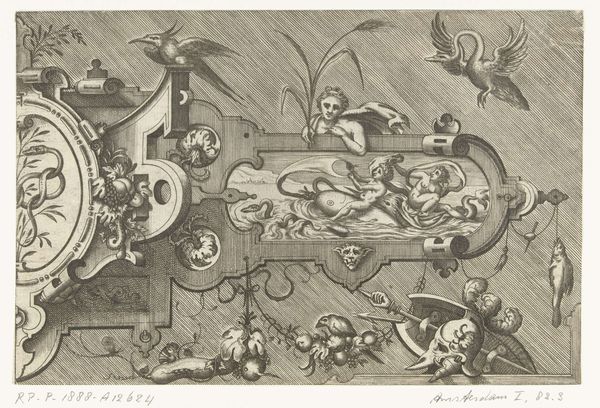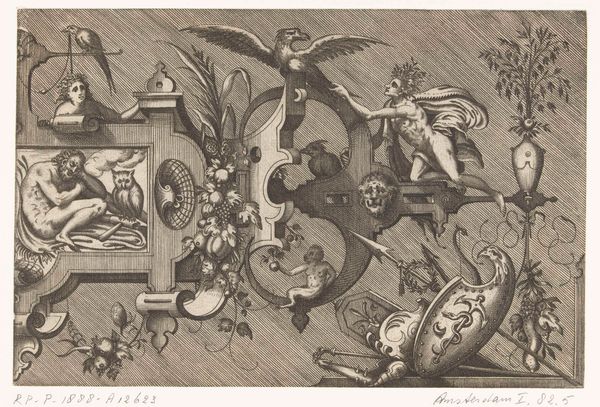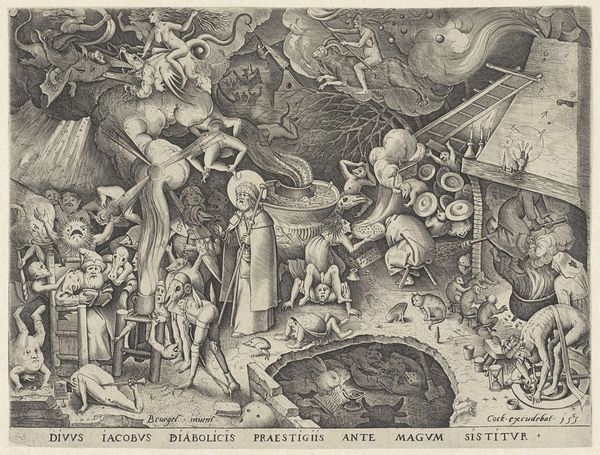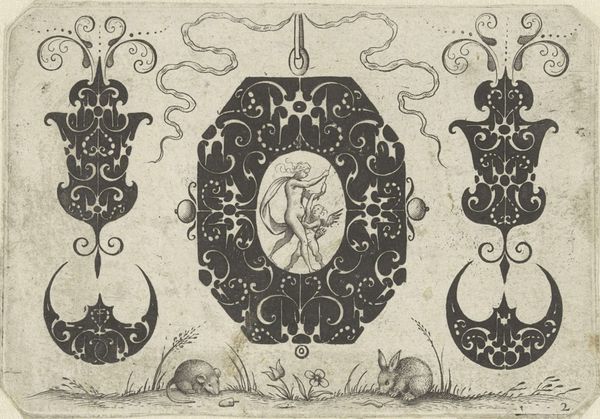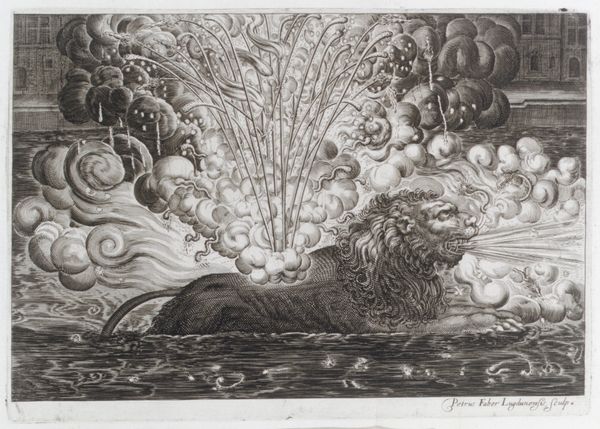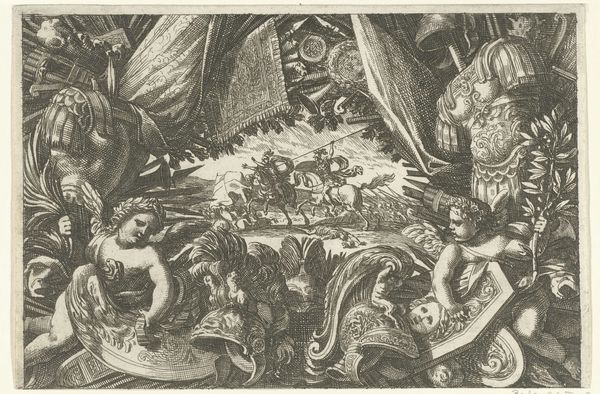
Studieblad met tekenvoorbeelden: koppen, figuren, vruchten, dieren before 1672
0:00
0:00
Dimensions: height 184 mm, width 237 mm
Copyright: Rijks Museum: Open Domain
Curator: This intricate engraving, believed to be created by Michael Snijders before 1672, is titled "Studieblad met tekenvoorbeelden: koppen, figuren, vruchten, dieren"—or "Study sheet with drawing examples: heads, figures, fruits, animals". What strikes you immediately? Editor: Well, I am initially struck by its almost overwhelming abundance and rather eccentric collection of images. The layering of portraits with fruit, cherubs, and animals creates a strange tension. Curator: Yes, that tension points to the interesting interplay of the artistic processes at play. It served as a kind of sample sheet, displaying various techniques and styles for aspiring artists or patrons. It showcases the engraver's skills and acts almost as an advertisement of capabilities and artistic education. Editor: Exactly, that explains the blend of styles and references—Classical figures, Mannerist portraiture—all crammed together on one plate. The image hints at a deeply class-based context, where certain aesthetic tastes were signals of education and status. And did you notice the rather haunting gaze of some figures? They make you uneasy. Curator: I agree. Consider the labor-intensive process of engraving—each line etched by hand. The selection of images isn't arbitrary. Those are clearly models. He is telling his prospective clients which source material he could access and replicate and that clearly conveys privilege. It’s also useful for trainees to use the sample sheets, to get to the grips with shading and cross hatching, effectively offering a shortcut in the path towards technical competence. Editor: That's insightful. Furthermore, I am thinking of the choice of animals... Are we looking at direct depictions of the subjects at hand or is he perhaps evoking more historical associations that align this image in conversation with others about colonization and subjugation, even though it is just practice sheet? The question that haunts me the most is this, who exactly would need something of that sort? Curator: A wealthy clientele with scholarly artistic pretentions or tastes perhaps, which is precisely what the art is meant to show them, access and opportunity for self display, the possibility of shaping the dominant culture rather than accepting it. It's a power dynamic rendered visible. Editor: So, it is simultaneously a showcase of technical skill, an indicator of societal structures and privilege. It's remarkable how much is conveyed in what might seem, at first glance, just a simple study sheet. Curator: Indeed. The image’s function as both a record of technique and document of its time makes this unassuming practice sheet all the more remarkable, a great resource to appreciate the nuances and complexities of Early Modern workshops. Editor: A multifaceted artwork which rewards prolonged exploration.
Comments
No comments
Be the first to comment and join the conversation on the ultimate creative platform.
